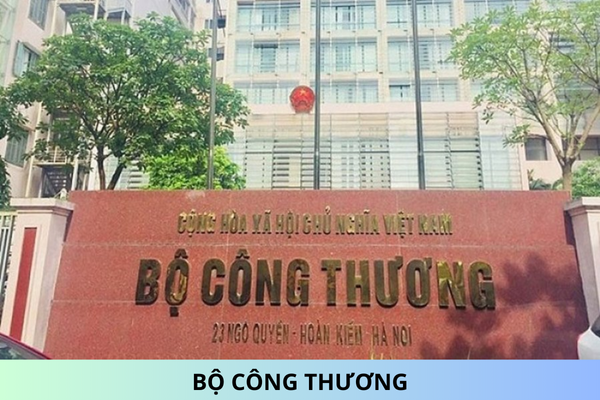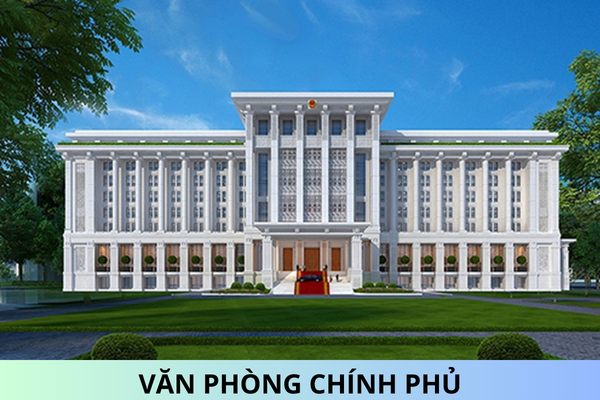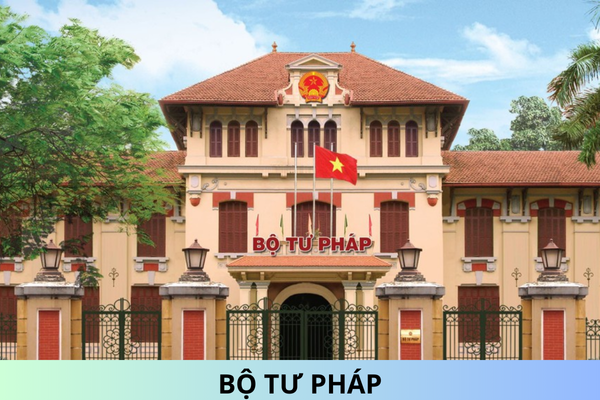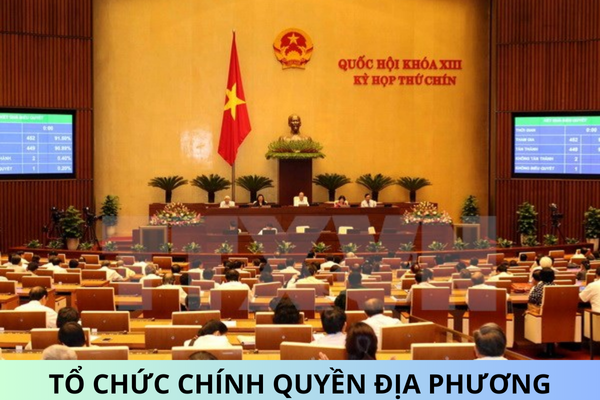From September 12th, 2023, which Circulars of the Ministry of Natural Resources and Environment of Vietnam cease to be effective?
From September 12th, 2023, which Circulars of the Ministry of Natural Resources and Environment of Vietnam cease to be effective? - Question from Hanh Nguyen (Tien Giang).
From September 12th, 2023, which Circulars of the Ministry of Natural Resources and Environment of Vietnam cease to be effective?
Pursuant to Article 2 of the Circular 01/2023/TT-BTNMT (effective from September 12, 2023) has the following provisions:
Terms enforcement
1. This Circular takes effect from September 12, 2023.
2. From the effective date of this Circular, the following Circulars shall cease to be effective, except for the case specified in Clause 4 of this Article:
a) Circular 16/2009/TT-BTNMT dated October 7, 2009 of the Minister of Natural Resources and Environment providing for national technical regulations on environment;
b) Circular 13/2012/TT-BTNMT dated November 7, 2012 of the Minister of Natural Resources and Environment promulgating the "National technical regulation on permissible limits of Dioxin in some soil types";
c) Circular 43/2013/TT-BTNMT dated December 25, 2013 of the Minister of Natural Resources and Environment stipulating national technical regulations on environment;
d) Circular 64/2015/TT-BTNMT dated December 21, 2015 of the Minister of Natural Resources and Environment promulgating national technical regulations on environment;
dd) Circular 65/2015/TT-BTNMT dated December 21, 2015 of the Minister of Natural Resources and Environment promulgating national technical regulations on environment;
e) Circular 66/2015/TT-BTNMT dated December 21, 2015 of the Minister of Natural Resources and Environment promulgating national technical regulations on environment;
g) Circular 67/2015/TT-BTNMT dated December 21, 2015 of the Minister of Natural Resources and Environment promulgating national technical regulations on environment.
....
As such, the following Circulars of the Ministry of Natural Resources and Environment will cease to be effective from September 12, 2023:
- Circular 16/2009/TT-BTNMT providing national technical regulations on environment;
- Circular 13/2012/TT-BTNMT on the National Technical Regulation on the allowable limit of Dioxin in some soil types;
- Circular 43/2013/TT-BTNMT stipulating national technical regulations on environment;
- Circular 64/2015/TT-BTNMT promulgating national technical regulations on environment;
- Circular 65/2015/TT-BTNMT promulgating national technical regulations on environment;
- Circular 66/2015/TT-BTNMT promulgating national technical regulations on environment;
- Circular 67/2015/TT-BTNMT promulgating national technical regulations on environment.
Promulgating national technical regulations on environmental quality in early 2023 in Vietnam
Pursuant to Circular 01/2023/TT-BTNMT stipulating the National Technical Regulations on the quality of the surrounding environment as follows:
Specifically, five new national technical regulations on environmental quality have been issued, including:
- QCVN 03:2023/BTNMT - National technical regulation on soil quality;
- QCVN 05:2023/BTNMT - National technical regulation on air quality;
- QCVN 08:2023/BTNMT - National technical regulation on surface water quality;
- QCVN 09:2023/BTNMT - National technical regulation on underground water quality;
- QCVN 10:2023/BTNMT - National technical regulation on sea water quality.
Circular 01/2023/TT-BTNMT takes effect from September 12, 2023.
Which agencies are responsible for developing and promulgating national technical regulations in Vietnam?
Under Article 7 of Circular 26/2019/TT-BKHCN, there are regulations on the order and procedures for construction, appraisal and issuance of QCVN as follows:
Order and procedures for developing, appraising and promulgating QCVN
1. Step 1: establish a drafting committee
a) Depending on specific conditions, ministries and ministerial-level agencies shall set up a QCVN drafting committee or designate their affiliated scientific and technological agencies and organizations (hereinafter referred to as drafting committees) to develop the QCVN. build QCVN.
b) The drafting committee should have the participation of representatives of ministries, sectors, relevant organizations and experts.
2. Step 2: compile draft QCVN
a) Preparing to compile the draft
a1) Collect, synthesize and evaluate the implementation of legal documents related to QCVN construction projects.
a2) Survey and assess the current state of state management and the level of risks related to the object of management and the main content of the QCVN construction project.
a3) Organize the study of information and documents on international commitments related to the QCVN construction project.
a4) Prepare and approve a detailed outline of the QCVN construction project together with the content framework of the draft QCVN.
a5) Request the Ministry of Finance (through the General Department of Customs) to coordinate in reviewing and determining HS codes for products and goods expected to fall within the scope of regulation of QCVN.
a6) Other related work.
b) Drafting QCVN
b1) Compiling the draft on the basis of the draft content framework agreed upon by the drafting committee and writing explanations.
b2) Synthesize and study technical documents; assess the current situation, carry out sampling for analysis, testing, testing, and trial application (if any) to determine the limit levels of technical characteristics; analyze and assess the risk level of the subject to be managed to determine the appropriate management method in the draft QCVN.
b3) Determine the HS code at the detailed level (8 numbers) for the managed objects which are group 2 products and goods.
b4) Organize seminars with the participation of relevant agencies, organizations and experts (priority is to invite associations, industries, businesses, people... who are affected subjects). Directive of technical regulations) for information transparency, to collect comments on the draft QCVN.
b5) Study, collect opinions, revise the draft, submit it to ministries and ministerial-level agencies to develop QCVN for consideration and send it to relevant agencies, organizations and individuals for comments.
3. Step 3: collect comments and finalize the draft QCVN
a) Ministries and ministerial-level agencies shall organize the review of the draft
a1) Send the draft QCVN enclosed with the explanation to relevant agencies, organizations and individuals for comments (send to the agencies, organizations and individuals who are directly affected by the project). draft QCVN).
In the event that the promulgated QCVN is likely to affect international trade, the ministry or ministerial-level agency shall send the draft QCVN to the Vietnam TBT Office to determine the need to notify the WTO in accordance with Circular No. 16/2018/TT-BKHCN dated November 29, 2018 of the Minister of Science and Technology regulating the operation and coordination in the network of Notification and Inquiry Agencies and Inter-sectoral Committees on technical barriers in (hereinafter referred to as Circular No. 16/2018/TT-BKHCN).
a2) Simultaneously with the submission of the draft for comments, the notice on the collection of opinions on the electronic information portal or the magazine, the official gift of the ministry or ministerial-level agency develops QCVN. The time to collect comments on the draft is at least 60 (sixty) days from the date of sending the draft for comments.
In urgent cases related to health, safety and environment, the consultation time may be shorter. The shorter consultation time shall comply with the decision of the Minister, the head of the QCVN construction ministerial-level agency, but not shorter than 30 days.
b) On the basis of comments and suggestions, the drafting committee handles, accepts and completes the draft QCVN and compiles a dossier of the draft QCVN according to the provisions of Clause 1, Article 10 of Decree No. 127/2007/ND-CP amended and supplemented in Clause 6, Article 1 of Decree No. 78/2018/ND-CP.
c) The report on the construction process, the project description must bear the certification seal of the compiling agency.
d) The ministries and ministerial-level agencies that develop QCVN organize the verification and review of documents and contents of the draft QCVN to ensure compliance with the approved plan and project and send a written request for appraisal. , which confirms the completeness and validity of the dossier submitted to the Ministry of Science and Technology for appraisal.
4. Step 4: Appraise the draft QCVN
a) The Ministry of Science and Technology considers the validity of the draft QCVN dossier as prescribed in Clause 1, Article 10 of Decree No. 127/2007/ND-CP as amended and supplemented in Clause 6, Article 1 of the Decree. No. 78/2018/ND-CP.
In case the dossier is invalid, the Ministry of Science and Technology shall transfer the dossier to the QCVN construction ministry or ministerial-level agency to complete the dossier.
b) Organize the appraisal of the draft QCVN according to the provisions of Clause 2, Article 9 of Decree No. 127/2007/ND-CP as amended and supplemented in Clause 5, Article 1 of Decree No. 78/2018/ND-CP .
c) In case the draft QCVN is complicated in nature, the subjects of management are within the scope and competence of state management of many ministries and branches, and have great influence on production, business, and trade. collecting opinions from ministries and branches directly related to the subjects under management, the Ministry of Science and Technology collects additional comments or requests ministries and ministerial-level agencies to develop QCVN for additional comments.
d) In case there is an overlap or overlap in scope and management of the draft QCVN with the QCVN system, there are many opinions disagreeing with the draft QCVN sent for appraisal.
The Ministry of Science and Technology shall transfer the dossier to the QCVN construction ministry or ministerial-level agency and clearly notify the reason for it, so that the QCVN construction ministry or ministerial-level agency can revise the draft content and then continue to send it for appraisal. The time taken by the ministries and ministerial-level agencies to develop QCVN to revise the draft content is not included in the QCVN appraisal time.
dd) On the basis of appraisal results, make appraisal dossiers of draft QCVN and notify in writing the appraisal results to QCVN-developing ministries and ministerial-level agencies.
5. Step 5: Issuing QCVN
a) In case of agreement with the appraisal opinion of the Ministry of Science and Technology, the ministry or ministerial-level agency shall finalize the draft and issue QCVN within thirty days from the date of receiving the appraisal opinion;
b) In case of disagreement with the appraisal opinion of the Ministry of Science and Technology, the ministry or ministerial-level agency shall develop QCVN to report to the Prime Minister for consideration and decision.
6. The General Department of Standards, Metrology and Quality under the Ministry of Science and Technology is responsible for assisting the Minister of Science and Technology in organizing the implementation of this Article.
Thus, the General Department of Standards, Metrology and Quality under the Ministry of Science and Technology is responsible for assisting the Minister of Science and Technology in organizing the promulgation of national technical regulations.
Best regards!











